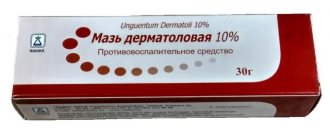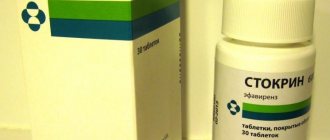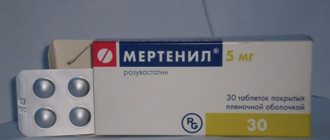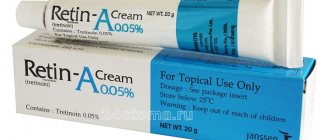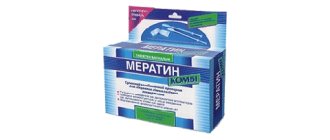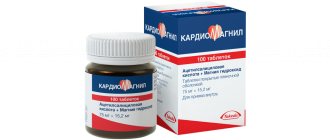A rash is a modified area of skin that differs from healthy dermis in appearance, texture and shade. It may appear as blisters, papules, localized spots or blisters. Only a pediatrician or dermatologist can make the correct diagnosis.
Pharmacies are overflowing with specialized medications that promise to quickly relieve the baby from an unpleasant illness. When choosing medications for newborns, it is important to be guided by 2 criteria - effectiveness and safety. And in this context, the drug Advantan for infants, recommended by many dermatologists and pediatricians, deserves special attention.
Compound
The active substance in Advantan ointment is included in a concentration of 1 mg/g. vaseline oil , Dehymuls E
are used as auxiliary components The fatty ointment for external use contains methylprednisolone aceponate at a concentration of 1 mg/g, liquid paraffin, soft white paraffin, microcrystalline wax, hydrogenated castor oil.
Cream composition: methylprednisolone aceponate at a concentration of 1 mg/g, decyl oleate, cetostearyl alcohol, glycerol monostearate 40-55%, softisan 378, solid fat, polyoxyl stearate 40, sodium edetate, glycerin 85%, benzyl alcohol, butylated hydroxytoluene, purified water.
Composition of the Advantan emulsion: methylprednisolone aceponate at a concentration of 1 mg/g, medium chain triglycerides, polyoxyethylene-2- and polyoxyethylene-21-stearyl alcohol, softisan 378, glycerin 85%, sodium edetate, benzyl alcohol, purified water.
Release form
Dosage forms of Advantan:
- ointment 0.1% (tubes 15 g);
- fatty ointment 0.1% (tubes 5 and 15 g);
- cream 0.1% (tubes 5 and 15 g);
- cutaneous emulsion 0.1% (tubes of 10, 20 and 50 g).
Ointment 0.1% is a white or slightly yellowish homogeneous opaque mass. Fatty ointment 0.1% is translucent, white or white with a slightly yellowish tint. Cream 0.1% for external use is white or slightly yellowish, opaque. Emulsion is an opaque white substance.
Pharmacodynamics and pharmacokinetics
The active component of Advantan is a synthetic non-halogen-substituted corticosteroid molecule, the peculiarity of which is an increased degree of dissociation (separation) during the implementation of its effects (both local and systemic).
When applied externally it stops the inflammatory process , suppresses allergic reactions and those associated with increased proliferation, which helps reduce objective symptoms and subjective sensations.
Repeated application of the drug to large areas of the skin (from 40 to 60% of the body surface), as well as its use under an occlusive dressing, does not cause disruption of the functional state of the adrenal glands : plasma cortisol and circadian rhythm remain within the physiological norm with a constant level of cortisol in daily urine .
The main metabolite of methylprednisolone aceponate binds to glucocorticoid receptors . The steroid receptor complex, in turn, binds to individual sections of DNA and thereby causes biological effects, including induction of macrocortin and suppression of the formation of inflammatory mediators such as leukotrienes and prostaglandins .
The degree of absorption through the skin is determined by the condition of the skin, the method of application and the dosage form of Advantan. When using ointments and creams, percutaneous absorption rates in patients with psoriasis and neurodermatitis did not exceed 2.5% (in healthy volunteers, the same figure is usually in the range of 0.5-1.5%).
When methylprednisolone aceponate emulsion is used, extremely small amounts are absorbed through the skin (absorption rate is about 0.27% in people with skin diseases and 0.17% in healthy volunteers). Even when treating the entire body, the systemic dose is so small that systemic effects are unlikely.
Advantan undergoes hydrolysis in the epidermal layer and dermis. Excretion of the metabolic products of methylprednisolone aceponate is carried out primarily by the kidneys , the half-life is about 16 hours.
Advantan oily ointment for external use 0.1% 15g tube
Pharmacological group:
Glucocorticosteroid for local use ATC code: D07AC14
Pharmacological properties:
The active component of Advantan, methylprednisolone aceponate, is a non-halogenated steroid.
Pharmacodynamics:
When applied externally, Advantan suppresses inflammatory and allergic skin reactions, as well as reactions associated with increased proliferation, which leads to a reduction in objective symptoms of inflammation (erythema, swelling, weeping, etc.) and subjective sensations (itching, irritation, pain etc.). When methylprednisolone aceponate is used topically at the recommended dose, the systemic effect is minimal in both humans and animals. After repeated application of Advantan to large surfaces (40-60% of the skin surface), as well as application under an occlusive dressing, no dysfunction of the adrenal glands is observed: the level of cortisol in plasma and its circadian rhythm remain within normal limits, and there is no decrease in the level of cortisol in daily urine.
During clinical studies, the use of Advantan for up to 12 weeks in adults and up to 4 weeks in children (including young children) did not reveal the development of skin atrophy, telangiectasia, stretch marks and acne-like rashes.
Methylprednisolone aceponate (especially its main metabolite, 6alpha-methylprednisolone17-propionate) binds to intracellular glucocorticosteroid receptors. The steroid receptor complex binds to specific regions of the DNA of immune response cells, thereby causing a series of biological effects. In particular, the binding of the steroid receptor complex to DNA by immune response cells leads to the induction of macrocortin synthesis. Macrocortin inhibits the release of arachidonic acid and, thereby, the formation of inflammatory mediators such as prostaglandins and leukotrienes. Inhibition of the synthesis of vasodilating prostaglandins by glucocorticosteroids and potentiation of the vasoconstrictor effect of adrenaline lead to a vasoconstrictor effect.
Pharmacokinetics:
Methylprednisolone aceponate is hydrolyzed in the epidermis and dermis. The main and most active metabolite is 6alpha-methylprednisolone-17-propionate, which has a significantly higher affinity for glucocorticosteroid receptors in the skin, which indicates the presence of its “bioactivation” in the skin.
The degree of percutaneous absorption depends on the condition of the skin, the dosage form and the route of administration (with or without an occlusive dressing). Percutaneous absorption in children and adults with atopic dermatitis (neurodermatitis) and psoriasis was no more than 2.5%, which is only slightly higher compared to healthy volunteers (0.5-1.5%).
After entering the systemic circulation, 6alpha-methylprednisolone-17-propionate is rapidly conjugated with glucuronic acid and is thus inactivated in the form of 6alphamethylprednisolone-17-propionate glucuronide.
Metabolites of methylprednisolone aceponate are eliminated mainly by the kidneys with a half-life of about 16 hours. Methylprednisolone aceponate and its metabolites do not accumulate in the body.
Indications for use
Indications for use of Advantan ointment, fatty ointment and cream
inflammatory skin diseases that are sensitive to therapy with topical glucocorticoids .
Answering the questions “What is Advantan ointment for?” or “What is the cream used for?”, the manufacturer indicates that methylprednisolone aceponate in these dosage forms is effective for:
- neurodermatitis;
- atopic dermatitis;
- childhood, microbial, occupational, dyshidrotic and true eczema;
- dermatitis (simple contact or allergic contact).
Indications for use of the emulsion
The emulsion has the same indications for use as all other forms of Advantan. In addition, it can be used for seborrheic dermatitis , photodermatitis , and also to eliminate the effects of sunburn .
For what pathologies is Advantan prescribed?
In pediatrics, the medication in question is prescribed for the treatment of dermatoses, regardless of their etiology, accompanied by epithelial peeling, inflammation and allergic rash.
Indications for use in infants:
- neurodermatitis;
- hives;
- psoriasis;
- eczema (microbial, true, seborrheic);
- dermatitis: allergic, atopic, seborrheic, contact;
- inflammation of the skin;
- sunburn.
Advantan is also prescribed to children with diathesis. Often the drug is included in complex therapy, supplemented with antifungal and antibacterial medications. In this case, a preliminary consultation with a pediatrician is required.
Contraindications
Advantan should not be prescribed for:
- the presence of manifestations of syphilis on the skin in the area of application of the product;
- skin tuberculosis;
- viral skin diseases with localization of lesions in the area of application of cream, ointment or emulsion (for example, herpes zoster or chicken pox );
- perioral dermatitis or rosacea in the area where the medication is applied;
- skin reactions to the vaccine;
- hypersensitivity to the components included in the drug.
In pediatrics, the drug is used to treat children over 4 months of age.
Analogs
If Advantan is not available for sale, it can be replaced with equally effective and affordable analogues. Glucocorticosteroids based on fluocinolone or methylprednisolone deserve special attention. It is safest to consult a dermatologist first.
Preparations analogues of Advantan:
- "Metizolone" cream;
- Flucinar gel;
- "Fluciderm cream";
- "Sinaflan" - liniment.
Many parents are wary of hormonal medications, and completely in vain. If the medication is prescribed by a doctor, it is safe. And it’s easy to mitigate possible risks - strict dosage and frequency of application eliminate any side effects.
Side effects
As a rule, Advantan is well tolerated and rarely causes any side effects.
Sometimes (no more than 0.01% of cases) local reactions may occur, manifested in the form of a burning sensation, skin itching, erythema, and the appearance of a vesicular rash. Long-term (more than 4 weeks) use, as well as use on skin areas constituting more than 10% of the total body area, can provoke:
- atrophy of the skin;
- the appearance of stretch marks and telangiectasia ;
- acneiform skin changes;
- a number of systemic effects associated with the absorption of methylprednisolone aceponate.
However, in the course of the studies, none of the above symptoms were identified either in adults who were treated with Advantan for up to 12 weeks, or in children (including young children) in whom the drug was used for up to 4 weeks.
In 0.01-1% of cases in patients, the use of Advantan is accompanied by: perioral dermatitis , folliculitis , skin depigmentation , hypertrichosis , allergic reactions due to individual sensitivity to any of the substances included in the drug.
Side effects
Breasts easily tolerate the drug in question; in the vast majority of cases, there are no side effects. As an exception, the following manifestations are possible:
- allergic rash, itching, burning;
- pigmentation of treated skin areas;
- formation of steroid-type acne, pustules, papules, and vesicles;
- slow tissue regeneration;
- hypertrichosis.
The listed reactions are observed mainly in patients with sensitive skin (when applying the composition in the groin area, armpits, treating large areas), as well as in the presence of open wounds, defects and damage to the skin.
Instructions for use of Advantan (Method and dosage)
Advantan is intended for the treatment of patients of all age groups, starting from four months of age. Both cream and ointments should be applied to the affected skin in a thin layer once a day.
Both ointment and Advantan cream can be used continuously for children for no more than 4 weeks, for adults - no more than 12 weeks
The duration of the course of using the emulsion, as a rule, is no more than 14 days.
Advantan ointment: instructions for use
An ointment is a dosage form in which fat and water are present in equal proportions. In this regard, the ointment is recommended for use in inflammatory skin diseases that occur in subacute or chronic form and are not accompanied by weeping.
The therapeutic effect of the ointment is also aimed at eliminating dryness and restoring physiological indicators of oily skin.
Fatty ointment is an anhydrous dosage form of Advantan, so its use is advisable for the treatment of dermatological diseases that are chronic inflammatory in nature and exist in the patient for a long period of time. Oily ointment is most effective in patients with very dry skin.
By creating an occlusive effect, the ointment provides a pronounced therapeutic effect even with significant infiltration and lichenification of the skin.
Advantan cream: instructions for use
Advantan cream is a substance with a high water content and low fat content. The use of this dosage form is indicated for the treatment of inflammatory processes that occur in acute or subacute form and are not accompanied by pronounced weeping.
The use of the cream allows you to stop the inflammatory process, both on smooth and hairy areas of the skin, including on skin that is prone to oiliness.
Emulsion Advantan: instructions for use
It is recommended to apply the emulsion to the affected skin in a thin layer, lightly rubbing.
For skin lesions caused by excessive exposure to ultraviolet radiation, the product is used once or twice a day. If the use of an emulsion is accompanied by increased dryness of the skin, it is necessary to switch to the use of ointment or fatty ointment, which contains a higher percentage of the active substance.
Instructions for use ADVANTAN
In the presence of bacterial dermatoses and/or dermatomycosis, in addition to therapy with Advantan cream, it is necessary to carry out specific antibacterial or antifungal treatment.
When using Advantan cream, care should be taken to avoid getting the drug into the eyes, deep open wounds and mucous membranes.
In studies where the drug was applied to 60% of the skin surface for 22 hours under an occlusive dressing, suppression of plasma cortisol levels and an effect on the circadian rhythm in adult healthy volunteers was observed.
Applying excessive amounts of topical corticosteroids over large areas of the skin or for long periods of time, especially under an occlusive dressing, may significantly increase the risk of systemic side effects. Please be aware that diapers can create an occlusive dressing effect.
As with systemic corticosteroids, glaucoma may develop with topical corticosteroids (for example, after high doses or extensive application of the drug over a long period of time, use of occlusive dressings, or application of the drug to the skin around the eyes).
If excessive dry skin occurs with prolonged use of Advantan cream, you should switch to a dosage form with a higher fat content - Advantan ointment.
Cetostearyl alcohol and butylated hydroxytoluene may cause local reactions such as contact dermatitis. Butylated hydroxytoluene may cause irritation to the eyes and mucous membranes.
In the case of treating large areas of skin or applying cream under an occlusive dressing, the duration of therapy should be limited to a minimum period. Use of the drug, especially for a long time, may lead to sensitization reactions. In this case, it is necessary to stop treatment and carry out appropriate therapy.
Use in pediatrics
Advantan cream is not recommended for use under an occlusive dressing. Please be aware that diapers can create an occlusive dressing effect.
The drug is not recommended for use in children under 4 months of age
.
An assessment of the risk/benefit ratio is required when used in children aged 4 months to 3 years.
.
Impact on the ability to drive vehicles and operate machinery
Does not affect.
Overdose
In studies aimed at studying the acute toxicity of Advantan, no risk of acute intoxication was established either with a single external use of the drug in an excessively high dose or with accidental ingestion.
Excessively long treatment with glucocorticosteroids , as well as intensive local use of these agents, can cause thinning and atrophy of the skin, the appearance of stretch marks and telangiectasia .
Treatment involves discontinuation of the drug.
special instructions
Neither methylprednisolone aceponate nor its metabolic products accumulate in the body.
For dermatoses and dermatomycosis of bacterial origin, Advantan therapy is supplemented with the prescription of specific antimycotic or antibacterial agents .
Avoid contact of the drug with the eyes.
External therapy with the use of glucocorticosteroids , as well as systemic therapy, can cause the development of glaucoma . The pathological process is usually provoked by long-term treatment, use of the drug under an occlusive dressing to treat the skin around the eyes, treatment with high doses of methylprednisolone aceponate.
Advantan cream for external use 0.1% 15g
Compound
1 g of cream contains:
Active ingredient: methylprednisolone aceponate 0.001 g.
Excipients: decyl oleate - 0.100, glyceryl monostearate 40-55% - 0.085 g, cetostearyl alcohol (cetyl alcohol 60%, stearic alcohol 40%) - 0.025 g, solid fat - 0.025 g, softizan-378 - 0.075 g, macrogol stearate - 0.030 g, glycerol 85% - 0.05Og, disodium edetate - 0.001 g, gasoline alcohol - 0.0 South, butylated hydroxytoluene - 0.00006 g, purified water - 0.59794.
Pharmacokinetics
Methylprednisolone aceponate is hydrolyzed in the epidermis and dermis. The main and most active metabolite is 6-methylprednisolone-17-propionate, which has a significantly higher affinity for glucocorticosteroid receptors of the skin, which indicates the presence of its bioactivation in the skin.
The degree of percutaneous absorption depends on the condition of the skin, the dosage form and the route of administration (with or without an occlusive dressing).
Percutaneous absorption in children and adults with atopic dermatitis (neurodermatitis) and psoriasis was no more than 2.5%, which is only slightly higher compared to healthy volunteers (0.5 - 1.5%).
After entering the systemic circulation, 6-methylprednisolone-17-propionate is rapidly conjugated with glucuronic acid and is thus inactivated in the form of 6-methylprednisolone-17-propionate glucuronide. Metabolites of methylprednisolone aceponate are eliminated mainly by the kidneys with a half-life of about 16 hours.
Methylprednisolone aceponate and its metabolites do not accumulate in the body.
Indications for use
Inflammatory skin diseases sensitive to therapy with topical glucocorticosteroids:
- atopic dermatitis, neurodermatitis, childhood eczema,
- true eczema,
- microbial eczema,
- professional eczema,
- simple contact dermatitis,
- allergic (contact) dermatitis,
- dyshidrotic eczema.
Contraindications
When studying the acute toxicity of methylprednisolone aceponate, no risk of acute intoxication was identified with excessive single dermal application (applying the drug over a large area under conditions favorable for absorption) or unintentional ingestion.
With excessively long and/or intensive use of glucocorticosteroids, skin atrophy (thinning of the skin, telangiectasia, stretch marks) may develop.
If atrophy occurs, the drug must be discontinued.
Directions for use and doses
Externally. Adults and children from 4 months of age. The drug is applied once a day in a thin layer to the affected areas of the skin.
As a rule, the duration of continuous daily treatment with Advantan should not exceed 12 weeks for adults and 4 weeks for children.
For subacute and acute inflammation without significant weeping, a dosage form with a low fat content and high water content is required. Advantan cream eliminates the inflammatory process on both smooth skin and the scalp, including oily skin.
Storage conditions
Store at a temperature not exceeding 25C.
Keep out of the reach of children.
Best before date
3 years.
Do not use after expiration date.
special instructions
In the presence of bacterial complications and/or dermatomycosis, in addition to Advantan therapy, it is necessary to carry out specific antibacterial and/or antimycotic treatment.
Avoid contact of the drug with the eyes.
As with the use of systemic glucocorticosteroids, glaucoma may develop after topical use of glucocorticosteroids (for example, when using large doses, or very long-term use of occlusive dressings or application to the skin around the eyes).
Description
White or yellowish opaque cream.
Conditions for dispensing from pharmacies
Over the counter
Dosage form
Cream for external use
Manufacturer and organization accepting consumer complaints
BAYER, JSC
Pharmacodynamics
The active component of Advantan, methylprednisolone aceponate, is a non-halogenated steroid.
When applied externally, Advantan suppresses inflammatory and allergic skin reactions, as well as reactions associated with increased proliferation, which leads to a reduction in objective symptoms of inflammation (erythema, swelling, weeping, etc.) and subjective sensations (itching, irritation, pain and etc.).
When methylprednisolone aceponate is used topically at the recommended dose, the systemic effect is minimal in both humans and animals. After repeated application of Advantan to large surfaces (40 - 60% of the skin surface), as well as application under an occlusive dressing, no dysfunction of the adrenal glands is observed: the level of cortisol in plasma and its circadian rhythm remain within normal limits, and there is no decrease in the level of cortisol in daily urine.
During clinical studies, the use of Advantan for up to 12 weeks in adults and up to 4 weeks in children (including young children) did not reveal the development of skin atrophy, telangiectasia, stretch marks and acne-like rashes.
Methylprednisolone aceponate (especially its main metabolite, 6-methylprednisolone-17-propionate) binds to intracellular glucocorticosteroid receptors. The steroid receptor complex binds to specific regions of the DNA of immune response cells, thereby causing a series of biological effects.
In particular, the binding of the steroid receptor complex to DNA by immune response cells leads to the induction of macrocortin synthesis. Macrocortin inhibits the release of arachidonic acid and, thereby, the formation of inflammatory mediators such as prostaglandins and leukotrienes. Inhibition of the synthesis of vasodilating prostaglandins by glucocorticosteroids and potentiation of the vasoconstrictor effect of adrenaline lead to a vasoconstrictor effect.
Side effects
The drug is usually well tolerated.
Very rarely (less than 0.01% of cases) local reactions such as itching, burning, erythema, and the formation of a vesicular rash can be observed. If the drug is used for more than 4 weeks and/or on an area of 10% or more of the body surface, the following reactions may occur: skin atrophy, telangiectasia, stretch marks, acneiform skin changes, systemic effects due to corticosteroid absorption. During clinical studies, none of the above side effects were noted when using Advantan fatty ointment for up to 12 weeks in adults and up to 4 weeks in children.
In rare cases (0.01% - 0.1%), folliculitis, hypertrichosis, perioral dermatitis, skin depigmentation, and allergic reactions to one of the components of the drug may occur.
Use during pregnancy and breastfeeding
If it is necessary to use Advantan ointment (oily) during pregnancy and lactation, the potential risk to the fetus and the expected benefits of treatment for the mother should be carefully weighed. During these periods, long-term use of the drug on large areas of the skin is not recommended.
Nursing mothers should not apply the drug to the mammary glands.
Interaction
Not found.
Overdose
When studying the acute toxicity of methylprednisolone aceponate, no risk of acute intoxication was identified with excessive single dermal application (applying the drug over a large area under conditions favorable for absorption) or unintentional ingestion.
With excessively long and/or intensive use of glucocorticosteroids, skin atrophy (thinning of the skin, telangiectasia, stretch marks) may develop.
If atrophy occurs, the drug must be discontinued.
Impact on the ability to drive vehicles and operate machinery
Not found.
Advantan's analogs
Level 4 ATC code matches:
Gistan-N
Sinalar
Avecourt
Mesoderm
Momederm
Betazon
Silkaren
Elokom
Flucinar
Sinaflan
Celestoderm
Cutivate
Betamethasone
Beloderm
Mometasone Furoate
Uniderm
Momat
Analogues of Advantan are the drugs Akriderm , Beloderm , Cutivate , Momat , Monovo , Sinoderm , Celestoderm-B , Elokom , Betliben .
Under the indicated names, both cream analogs and ointment substitutes are produced.
The price of ointment analogues is from 105 Russian rubles.
What is better - Advantan or Elokom?
Advantan and Elokom are analogue drugs. The basis of the first is methylprednisolone , the second contains mometosone furoate .
Methylprednisolone penetrates the systemic circulation in smaller quantities than mometosone and is considered safer for use in pediatrics.
Mometosone is well absorbed by the body through the skin, which can cause quite serious side effects in the child (muscle weakness, weight gain, swelling, etc.), as well as, in the case of long-term use, growth retardation.
Unlike Advantan, which can be prescribed even to 4-month-old children, Elokom is indicated only from 2 years of age.
How to apply the drug correctly
Many parents have a natural question: how often can infants use Advantan? Pediatricians recommend applying any of the above forms of medication 1-2 times a day, with prior agreement with your doctor.
Instructions for use:
- This is a hormonal drug, so it is used only externally, locally.
- The optimal frequency of treatment of problem areas is once a day. The composition is applied in a thin layer, evenly distributed over the affected area.
- It is strictly forbidden to rub liniment into the epithelial layer.
- To reduce the concentration of active ingredients, the ointment is diluted with baby cream in a 1:1 ratio.
Methylprednisolone in low concentrations is completely safe for children. The only condition for achieving the desired result is to strictly adhere to the prescribed treatment regimen and daily dosage of the medication.
For children
Advantan is prescribed for children for allergic and inflammatory skin diseases .
Advantan for infants and older children is prescribed in the form of an ointment or cream, since there is currently no accurate data regarding the safety of using the emulsion.
Mothers often have questions: “Is Advantan ointment hormonal or not?” or “Is the cream hormonal or not?” The active substance of Advantan - methylprednisolone - is a synthetic glucocorticosteroid , that is, the drug is hormonal .
Since the medicine contains hormones, it should be prescribed very carefully (this is especially true for infants). However, in the presence of severe clinical symptoms of allergy , the remedy can be recommended starting from the age of four months.
In accordance with the instructions, both cream and ointment can be used in a child for no more than 4 weeks. The medicine should be applied to the skin once a day.
When prescribing a topical glucorticoid (GC) to a child for external use, doctors usually adhere to the following rules:
- these drugs are used taking into account the biorhythms of children (in order for GC to imitate the daily rhythm of the function of the adrenal cortex , the drug should be used in the morning);
- use an individual approach to each child, taking into account the extent of skin damage, age, severity of the process, clinical form of the disease, duration of previous treatment using similar agents, etc.;
- change the concentration of hormones in the dosage form, diluting it in different proportions with indifferent creams (for infants, dermatologists often advise diluting the drug with baby cream or petroleum jelly in a ratio of 1:10, the optimal proportion for children under three years of age is 1:7, for children three - five years old - 1:4, for children 5-10 years old - 1:3, for children over 10 years old - 1:1);
- external therapy with GC drugs is complemented by other types of local and systemic treatment
Advantan is effective for diathesis in children and other allergic skin reactions even in critical skin conditions. However, it should be borne in mind that for a very young child, as well as in the presence of significant skin lesions, it is recommended to apply it very carefully, since methylprednisolone , being absorbed through the skin into the systemic bloodstream, can cause side effects .
The drug is hormonal, so it is necessary to stop treatment gradually.
What is better - cream or ointment?
The choice of dosage form is determined by the condition of the skin: for dry skin, the optimal choice is a fatty ointment; for normal skin (not dry, and without weeping elements of the rash) - ointment; for diseases characterized by weeping , doctors recommend using cream, and for the treatment of sunburn and photodermatitis, it is best to use an emulsion.
Forms of release of the drug
The drug in question is available in 4 dosage forms, prescribed taking into account the characteristics of the pathological process and the nature of skin lesions in newborns. This variety simplifies the fight against unwanted manifestations and allows you to achieve the desired therapeutic effect in the shortest possible time.
For all dosage forms of the hormonal drug presented below, the active substance remains common - fluocinolone.
Emulsion
A liquid suspension that combines water and medium-thick oil. Prescribed primarily for the treatment of diathesis in infants. The peculiarity of the emulsion is that it allows the liquid to evaporate freely (relevant for weeping wounds) from the affected areas of the skin.
Application area:
- weeping eczema;
- inflammation of the neck, face, areas with hair;
- dermatitis localized in skin folds.
This form of the drug is convenient for application to the head and neck of a newborn.
Cream
A fatty and rather thick composition, widely used in modern pediatrics. Most often, the cream form of the drug is prescribed for advanced or acute inflammation. It is indispensable for the treatment of allergic manifestations on oily skin. The composition is convenient to apply to both hairy and completely smooth areas of the body.
Ointment
One of the most common forms of the drug Advantan. It is characterized by high fat content and almost complete absence of purified water. It is prescribed for the inflammatory process, when it is necessary to first soften the stratum corneum of the dermis and improve the penetrating abilities of the active ingredients.
Advantan ointment and cream - detailed instructions for use
It is impossible to smear Advantan on a baby's face, despite the high penetrating abilities of the liniment. Its use is indicated for epithelial peeling on the limbs and body.
Fatty ointment
A dosage form that does not contain water. After application to the surface of the problem area, it forms a greasy film, which causes a pronounced occlusive effect (based on the principle of bandages of the same name), due to which a stable therapeutic effect is achieved. Suitable for treating inflammation localized in dry dermis. A characteristic feature of the drug is its ability to penetrate problem areas of the skin in a matter of minutes, effectively eliminating pathogenic processes.
Reviews about Advantan
Reviews of Advantan cream, as well as reviews of Advantan ointment, are quite contradictory: some call these products a salvation for skin prone to inflammatory and allergic diseases , others not only do not see an improvement in the condition, but, on the contrary, believe that the use of the drug only worsened the course of the disease.
However, based on the fairly high rating of the product on specialized sites (an average of 4.2-4.3 on a five-point scale), we can conclude that the cream, ointments, and emulsion are effective medications, but they must be prescribed by a doctor . Moreover, supplementing external therapy with general treatment in order to eliminate not only the symptoms, but also the cause of the pathological process.
In reviews of Advantan cream for children, many mothers write that the drug quickly copes with itching and unpleasant skin rashes, but in order to consolidate the result and prevent relapses, it is necessary not only to undergo a course of treatment, but also to review the diet and eliminate all possible allergens.
Causes of rashes in babies
Allergic dermatitis is a common skin disease characteristic of newborns and young children. Despite the fact that the rash can be effectively and quickly gotten rid of, it causes a lot of inconvenience for both the little ones themselves and their parents. The first sign of concern is redness of the baby's bottom or cheeks.
Pediatricians identify several reasons that can trigger a rash in babies:
- inappropriate nutritional mixture (typical with artificial feeding);
- the presence of active allergens in mother’s breast milk;
- diaper rash that occurs when wearing diapers;
- sweat rash;
- deficiency of fluid in the toddler’s body (often observed when feeding formulas);
- unsuitable air freshener, washing powder, bedding or clothing fabric.
Doctors recommend using Advantan ointment for children in each of the listed cases. It effectively and quickly eliminates the rash and accompanying symptoms, and promotes the formation of resistance to external irritants and allergens.
Advantana price, where to buy
How much an ointment, cream or emulsion costs depends on the pharmacy through which the drug is sold. On average, the price of Advantan cream 15 g is 370 rubles, the price of Advantan ointment 15 g is 350 rubles, fatty ointment 15 g is 350 rubles, the price of Advantan emulsion is from 355 rubles.
- Online pharmacies in RussiaRussia
- Online pharmacies in UkraineUkraine
- Online pharmacies in KazakhstanKazakhstan
ZdravCity
- Advantan cream 0.1% 15 gLEO Pharma Manufacturing Italy S.r.l.
RUR 566 order - Advantan ointment 0.1% 15g Intendis Manuf.Spa/Bayer Healthcare Manufacturing S.r.l.
RUR 566 order
- Advantan emulsion for external use. approx. 0.1% 20g Bayer Healthcare Manufacturing S.R.L.
RUR 566 order
- Advantan oily ointment 0.1% 15g Intendis Manuf.Spa/Bayer Healthcare Manufacturing S.r.l.
RUR 615 order
- Advantan ointment 0.1% 50g Intendis Manuf.Spa/Bayer Healthcare Manufacturing S.r.l.
RUB 1,257 order
Pharmacy Dialogue
- Advantan ointment (tube 0.1% 15g)Intendis Manufakturing
RUR 566 order
- Advantan emulsion tube 0.1% 20gIntendis Manufakturing
590 rub. order
- Advantan ointment (tube 0.1% 15g (oily))Intendis Manufakturing
RUR 596 order
- Advantan ointment tube 0.1% 15g fattyBayer
RUR 569 order
- Advantan ointment tube 0.1% 15g Bayer
RUR 552 order
show more
Pharmacy24
- Advantan 0.1% 15 g No. 1 cream Bayer Healthcare Manufacturing S.R.L., Italy
255 UAH.order - Advantan 0.1% 15 g ointment Bayer Healthcare Manufacturing S.R.L., Italy
255 UAH order
- Advantan 0.1% 20 g No. 1 emulsion Bayer Healthcare Manufacturing S.R.L., Italy
255 UAH order
PaniPharmacy
- Advantan liquid Advantan emul. 0.1% 20g Italy, Bayer Healthcare Manufacturing
284 UAH order
- Advantan cream Advantan cream 0.1% 15g Italy, Bayer Healthcare Manufacturing
269 UAH. order
- Advantan ointment Advantan ointment 0.1% 15g Italy, Bayer Healthcare Manufacturing
291 UAH order
show more
